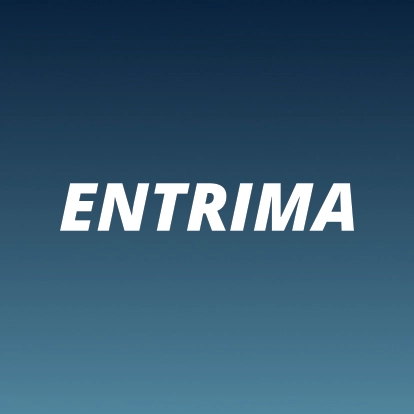Learning Platform - "Markets & Trading"
Course: Oil, Oil Markets & Oil Trading
About the “Oil, Oil Markets & Oil Trading” online programme
The programmes “Oil, Oil Markets & Oil Trading” (all levels) are specifically designed to expand students’ knowledge of, and skills with respect to, a specific energy product, namely oil. The programmes cover oil operations, crude refinery & processing, oil storage & strategic reserves, transport, organisation of the global, oil markets, oil pricing, trading of oil, oil-related products & oil derivative contracts, oil trading platforms, oil asset & portfolio management, asset-backed trading, optimisation of oil portfolios, oil trading strategies, and trading-related processes, such as settlement, invoicing, valuation of oil positions & finance.
Objectives
In the first level of the “Oil, Oil Markets & Oil Trading” programme focus is on the physicality of oil. The programme incorporates the essentials of the physical product (crude oil & oil-related products). It covers the oil value chain, and ranges from production, via transport & storage, to its processing, refinery, distribution and consumption. Knowledge of physicality is essential in order to understand pricing mechanisms, taxation, organisation of oil markets and create fundamentals for oil-related products. Without knowledge of physical features one cannot embed logic with respect to trading & risk management.
Course Contents
Oil value chain – Physicality
- Production and consumption in a nutshell
- About transport and storage of crude and refinery products
Reserves & Production
- About exploration & production – Production sharing agreement
- Concerning reserves – conventional and unconventional
- Covering recovery rates & enhanced recovery techniques
Crude oil – Grades & benchmarks
- About the quality of oil – Sweet vs. sour & light vs. heavy
- Concerning the consequences for refining and pricing
Refining – Refinery capacity & crack spread
- About the refening process, the output
- Concerning the gross processing margin of refineries
- Covering spare capacity and volatility of the crack spread
Crude selection – Product slate
- About refinery products – The output of a refinery
- Concerning decision making: The growth product worth
Transport – Pipelines & tankers
- About transportation – Oil tankers
- Concerning main routes and the challenges
- Geo-politics
Contracts & pricing – Price drivers
- About substitution (crude substitution; renewables)
- Indexation – Platts indices
- The role of speculation
OPEC – Role & developments
- The influence of the cartel on pricing
- Agreements within the organisation
- Development of its role over time; spare capacity & renewables
Exam & Certification
Objectives
In the second level of the “Oil, Oil Markets & Oil Trading” programme focus is on the trading of oil, and therewith at markets, products and pricing. In this programme special attention is provided to physical players, and therefore focus is on sourcing, sales, and hedging of the procurement and sales exposures (consumer and producers hedges). The trading environment is described and attention is given to trading-related terminology. Derivative contracts with respect to crude and refinery products are incorporated. Student learn the fundamentals of forwards & futures, swaps and options. From a hedging perspective the main focus is on oil forwards & futures.
Course Contents
Oil forward market
- Covering the differences between spot & forward markets.
- About price volatility in spot & forward markets; mean reversion.
Oil exchanges & brokers
- About OTC markets and trading venues for oil.
- Concerning market liquidity, notional value and open interest.
Oil forwards & futures – The varieties
- Concerning the most commonly known contracts.
- The time-to-maturity and delivery moment/period.
Oil forwards & futures – The application
- Covering asset-backed trading as well as proprietary trading.
- About managing crude & derivatives exposures.
Oil forwards curves – Pricing of oil forwards & futures
- About contango & backwardation, including seasonality.
- Covering the convenience yield.
Hedging oil refinery capacity – Trading crack spreads
- About procurement & sales on a forward basis; contract mgt.
- Covering crack spreads; what these are & how to trade these.
Hedging oil storage capacity – Trading time spreads
- Locking in potential margins on a forward basis.
- Covering time spreads; what these are & how to trade these.
Hedging oil transport capacity – Trading location spreads
- Locking in potential margins on a forward basis.
- Covering location spreads; what these are & how to trade these.
Settlement of oil forwards & futures – Part 1
- Including physical delivery & cash settlement.
- Covering the exchange for physicals (EFP) mechanism.
Settlement of oil forwards & futures – Part 2
- About trading at settlement (TAS).
- Concerning the alternative delivery procedure.
Exam & Certification
Objectives
In the third level of the “Oil, Oil Markets & Oil Trading” programme focus is on trading, and incorporates asset & portfolio management. The topics and themes incorporated in the previous programme (Intermediate level) are also incorporated in this programme, but are now taken into depth. Optimisation of the allocation of assets (such as storage and refineries) is taken into consideration. Next, arbitrage techniques are looked at and a basis is created for proprietary trading. The application of oil derivative contracts is thoroughly incorporated; participants are explained how oil swaps and oil options can be used for hedging, arbitrage as well as speculative activities.
Course Contents
Accounting – Book structure & internal transfers
- About internal transactions & prices, including premiums.
- Concerning book structures, cost allocation & P/L responsibility.
- Covering upstream, midstream & downstream activities.
Customer portfolio
- About oil supply contracts; including load forecast.
- Concerning circumstances, e.g. weather, economic situation.
Physical oil assets
- About make-or-buy decisions & asset-backed trading.
- Aggregation of rights & obligations (prod., cons. & settlement).
Oil swaps – Physical settlement
- Concerning solutions for problem solving in the physical world.
- About basis swaps, or location swaps.
Oil swaps – Cash settlement
- About financially-settled agreements, including indexation.
- Concerning fixed-for floating contracts.
Oil options – Outright options
- About tradable contracts in the OTC markets & on exchange.
- Pricing of oil options; intrinsic value plus time value.
Oil options – Application for hedging purposes
- About hedging natural short/long positions with call/put options.
- About oil price caps & floors.
Oil options – Embedded optionality
- About volume flexibility & swing optionality in supply contracts.
- Covering structuring, including contracted quantities.
Exam & Certification
Objectives
In the fourth level of the “Oil, Oil Markets & Oil Trading” programme focus is on optimisation of oil portfolio’s, and goes into depth on speculation. Seeking opportunities and avoiding pitfalls are incorporated. Proprietary trading is looked at by means of high sophisticated trading techniques and strategies. The complexity of some specific oil trading strategies and activities leads automatically to an increased importance of risk management. This automatically implies that risk management gets attention in this programme, because the more trading is done by means of speculation, the more importance risk management gets.
Course Contents
Oil risk management – Value-at-risk (VaR) of an oil position
- About the a commonly applied method to quantify an exposure.
- Covering the relevant time horizon and confidence level.
Oil risk management – Risk off-set due to correlation
- About statistical data and concepts, and how to apply these.
- Concerning pairs or proxies.
Oil risk management – Value-at-risk (VaR) of an oil portfolio
- About the quantification of aggregated oil positions.
- Considering opposing long/short positions & correlated positions.
Oil risk management – Off-setting risk due to opposing exposures
- About risk off-setting and netting.
- Covering portfolio integration and cross-margining.
Modelling – The real option approach
- About production capacity, transport capacity & storage capacity.
- About management decisions, such as the right to dispatch.
Modelling – Physical oil assets as real options
- Considering oil rigs, oil refineries, oil pipelines and oil storages.
- About call options on the crack/time/location spread.
Modelling – Complexity: Valuation & hedging of spread options
- About structuring, including exotic options.
- Including spread option valuation models, e.g. Margrabe.
Modelling – Optimizing the hedges
- About hedging strategies, e.g. proxy-hedging.
- Concerning dynamic risk management; Delta-hedging.












